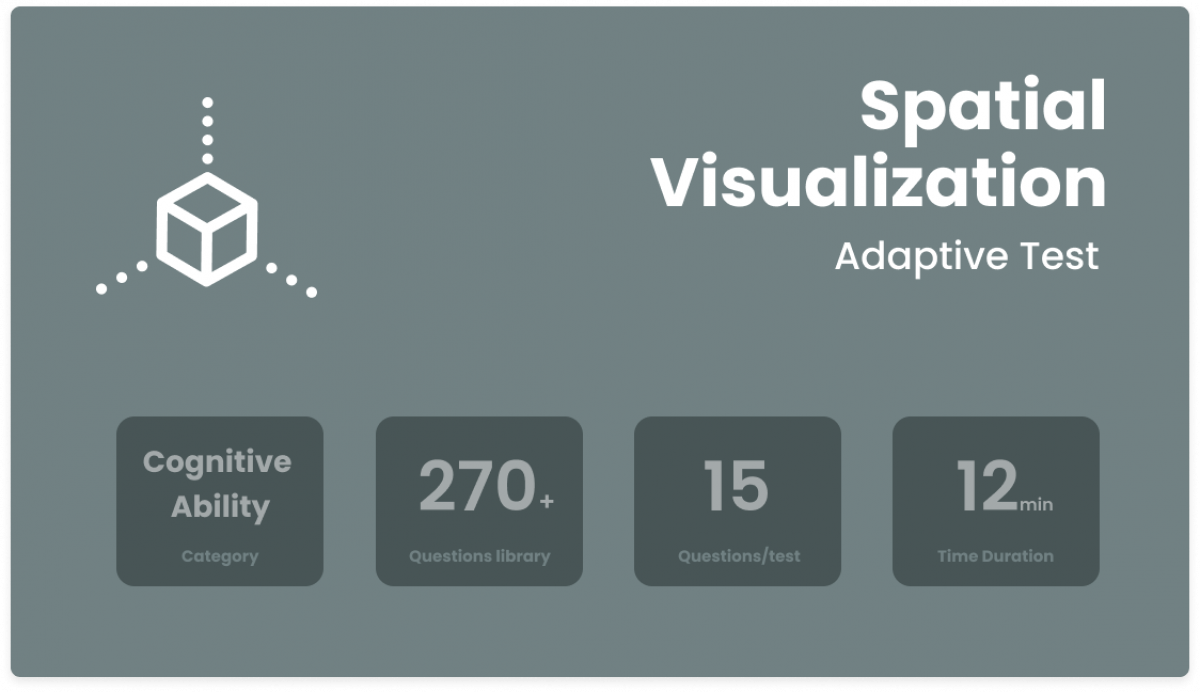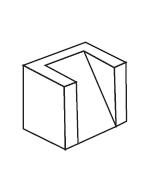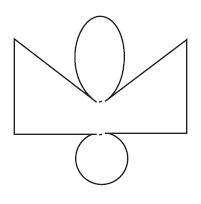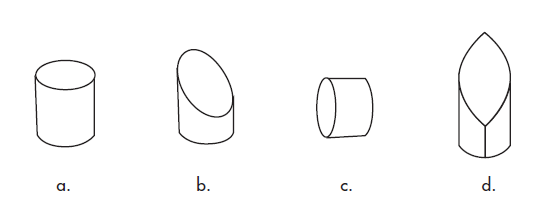Help Desk
Spatial Visualization

About
The visualization test assesses the candidate’s ability to think visually, spatially, and graphically.
This test concerns itself with measuring the candidate’s ability to visualize 3D objects from isometric (or) orthographic vies, rotation of those objects mentally, and understanding of the formation and make-up of those 3D structures.
The test is an adaptive test that varies the difficulty of the questions based on the current performance of the candidate, thereby zeroing in on a fairly definitive numeric measure on the candidate. The result of this section is given in percentiles, relative to the whole test pool population of Merreo.
What does this test measure?
- Visualize three-dimensional objects
- Understanding the makeup and formation of 3D shapes
- Thinking visually
Where to use this test?
The ultimate goal of this test is to measure the spatial visualization capacity of the candidates. And spatial visualization is one of the most important skills for most Engineering, Architecture & design roles, and so this test is relevant for such roles.
For example,
- Mechanical Engineering
- Civil Engineering
- Architecture
- Industrial Design & more
Please avoid using this test for irrelevant roles that don't need this ability like business roles. Please use our data-driven pre-sets for the best results.
Test Contents
- Isometric views to Orthographic views
- Orthographic views to isometric views
- Part rotations
- Composition of a structure
- Folding and unfolding of a 3D structure
Example 1
Count the number of blocks in this 3D shape
_______ Blocks

Answer - 81
Explanation
This question is a numeric entry-type question. The number of blocks has to be counted assuming a regular structure in the views not visible to us. This problem can be quickly completed by counting in sub bundles of 9.
Example 2
Determine the one that could be the original 3D shape when rotated


Answer – (D)
Explanation
This question is best solved by understanding the structure of the shape and looking for the details. The choice (d) is the only possible shape that could be a rotated shape of the shape in the question.
Example 3,
When the below unfolded pattern is folded, which one of the following could possibly represent the formed 3D shape?


Answer – (B)
Explanation – This answer can be best solved by the process of elimination of answer choices by thinking about each shape’s structure and what each shape will entail in its 2D unfolded pattern. Choice (b) is the only possible shape that could be a folded shape of the pattern in the question.
And a few other question types will appear on the test as well.
Supported by:
